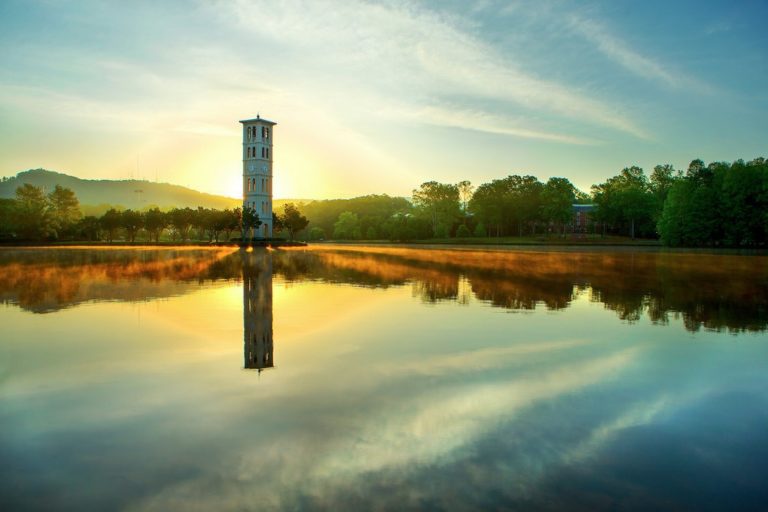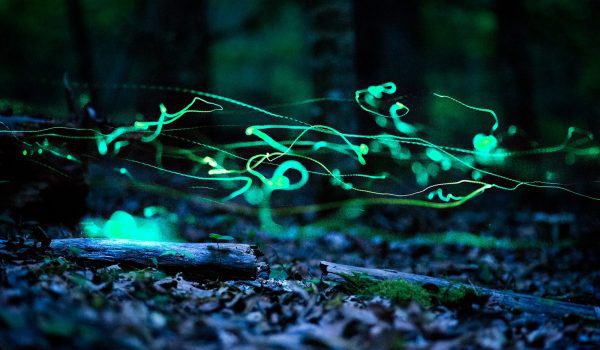Did you know that Furman University’s gone through a total of six different campus locations? In fact, the school didn’t put down roots at its current Greenville County home until more than 125 years after opening. Today, the campus continues to earn recognition as one of the most picturesque in the U.S. — for good reason.
Out in Edgefield
The school started out originally as a theological seminary based in Edgefield, South Carolina — about 60 miles southwest of the state’s capital in Columbia.
The Baptist State Convention of South Carolina, a partnership of several church leaders from throughout the state who wanted both to evangelize and to educate, had been playing with the idea of a school for quite a while. The convention realized this dream in 1827.
Although Dr. Richard Furman — first president of the Baptist State Convention — had died just months before plans began to take shape, the convention honored him as the namesake of the new seminary: Furman Academy and Theological Institution.
“The object of the Seminary is, to afford instruction to Students, that shall prepare them for the higher classes, in the most respectable colleges of the United States, and also to impart instruction in Theology to young men designed for the Gospel Ministry,” read an early ad that the convention ran in Charleston’s The Courier.
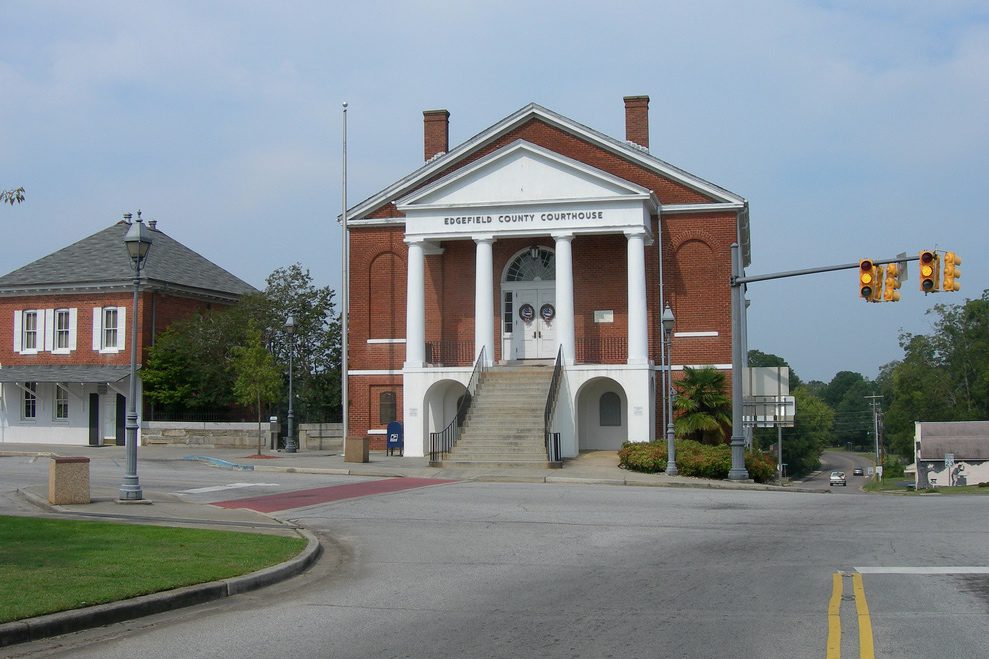
While Dr. William B. Johnson, one of the early school board members, argued for a location in Greenville from the beginning, the school opened instead in Edgefield.
“The chief reason for the choice of Edgefield [was] the hope that Georgia Baptists would cooperate in the enterprise,” wrote Robert Norman Daniel in his book Furman University: A History.
In the minds of the school board members, Edgefield’s proximity to the South Carolina-Georgia line made it a prime location for the academy.
Up in the High Hills
Much to the disappointment of the school’s founders, the Georgia Baptists never came to their aid, as they had counted on. Additionally, finances were dwindling, and the first principal had already resigned.
Less than two years after classes began on January 15, 1827, the governing Baptist State Convention resolved to begin abandoning the Edgefield campus.
As the school leaders were deciding on a new location, the theological students commenced meeting at the home of the new principal, Reverend Jesse Hartwell, who lived in the High Hills of Santee.
Hartwell later donated 28 acres in that same area of the state to the academy, which dedicated the new campus site in spring of 1830.
Working the Land in Fairfield
By 1837, Furman had decided to change route once again. This time, it opened its doors at a new and more spacious campus in Fairfield County, near the town of Winnsboro, with the intent of operating as a “manual labor school.”

Manual labor schools, a trend of the day, combined the intellectual-based pursuits characteristic of higher learning with a track for students to learn hands-on trades such as farming. These schools sought to create an environment that required students to remain physically active.
Since the new school was set on over 550 acres, you can imagine the students stayed active working the land, indeed!
Going to Greenville
Because of increasing debts, however, the school eventually opted to sell the land that had been used for the manual labor portion of its operations in the mid-1800s.
“The Fairfield site had been selected . . . because of the manual labor school experiment,” wrote Daniel. “Now that this was over, there was little reason to keep a theological institution out in the country.”
Moving plans began once again. The state Baptist convention began raising funds for a new location for a college in 1850. Convention members proposed three South Carolina towns to fit the bill: Anderson, Greenwood, and Greenville.
Captain W. Brooks presented the advantages of Greenville to the committee. Perhaps among them were the city’s larger size, as well as its “good climate and the promise of a railroad,” which would come through within a few years.
And the convention’s president at the time, Dr. William B. Johnson, no doubt took this opportunity to speak up and remind the group that he’d been suggesting Greenville all along — even since before the days in Edgefield.
Greenville it would be.
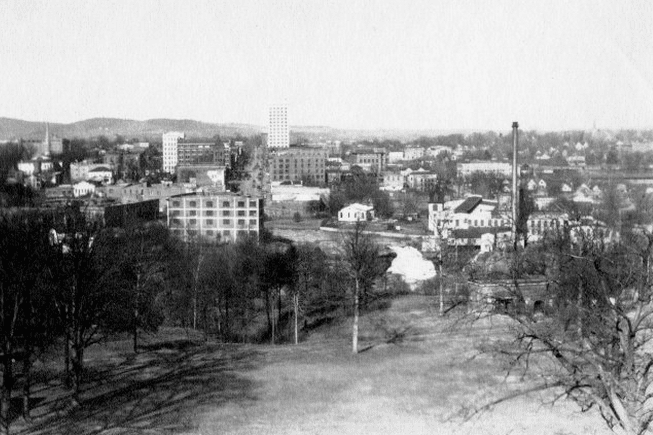
By February 1851, the theological institution and a preparatory school were operating at various homes and buildings in downtown Greenville. The school purchased land nearby to expand its campus that same year, securing an initial 25 acres from Vardry McBee.
“We have ventured to style the region where it now exists, the promised land. We have done so because it is a region where the salubrity of the climate, the beauty of the scenery, and the character of the population conspire to form one of the most eligible situations for a seat of learning,” wrote Dr. James C. Furman, after his initial visit to McBee’s land.
In fact, Dr. Furman could hardly say enough good about the university’s relocation to Greenville:
“In this lovely region stands the town of Greenville — a town where the gentle undulation of the surface and the graceful flow of its river, and the blue line of mountains in the horizon, justify the appropriateness of a name which blends the ideas of beauty of spring and of the quietness of a rural retreat.”
Room to Grow
The 1950s were “the most exciting [years] that the school had known so far,” according to former professor and author Alfred Sandlin Reid.
Furman’s campus continued to expand; it had become a cluster of trailers and temporary housing spread about the downtown area. The student body, too, was ever growing. By 1854, it had surpassed 200.
“Furman needed more space for the growing student population,” wrote the authors of “Post World War II and the Move to the New Campus.” “Furman leaders felt relocation would add excitement to the project of expansion and make raising funds easier for the school. And besides, dealing with the old buildings would have been expensive and time consuming.”
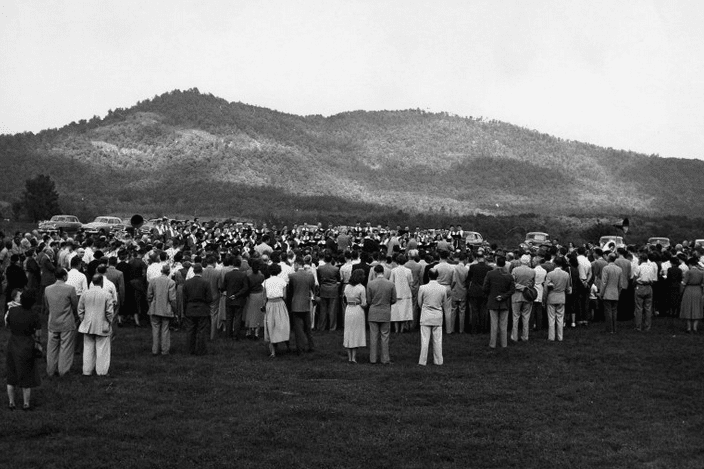
This final move would pose the perfect opportunity for Furman to fully merge with its sister campus Greenville Woman’s College; it would also afford the university the space it needed to continue to flourish.
“The new site consists of about a thousand acres of rolling land with an elevation suitable for the principal buildings and affording a view of the Blue Ridge Mountains on one side and Paris Mountain on the other,” wrote historian Daniel. “No more beautiful situation . . . could have been found in a section noted for the charm of the landscape.”
Though Furman had lived here and there, it wasn’t until it settled into its current Greenville locale that it finally felt at home, a sentiment expressed in its alma mater to this day: “The mountain city is her home,” begins the anthem, clearly alluding to Greenville.
Or is it clear?
The Mountain City
Now, you may think the story ends there. And technically, it does; Furman University hasn’t budged an inch since its most recent move in the 1960s. But somehow, the university has managed to change cities once again in recent years.
In April 2013, the City of Travelers Rest officially annexed Furman University into its city limits, revising the university’s hometown address once again.
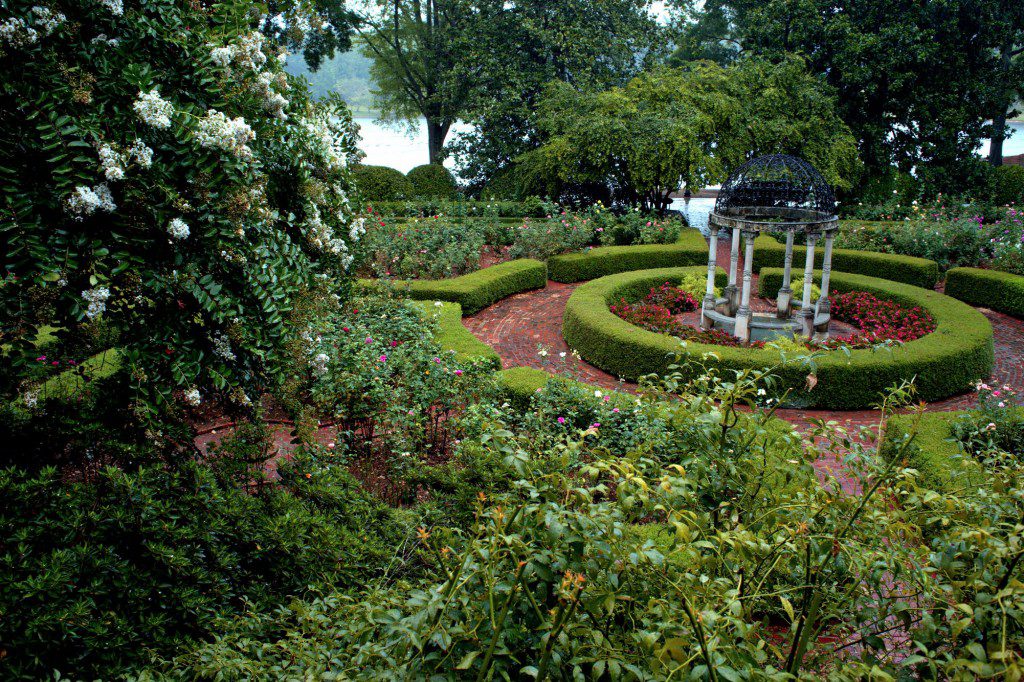
But not to worry about the school’s alma mater lyrics. As part of Travelers Rest, Furman University still gets to enjoy being part of a “mountain city.”
Travelers Rest affords easy access to the peaceful peaks and countryside of northern Greenville County, as well as a growing business culture that has welcomed a new tasting room, bookstore, ice cream parlor, and more this year alone.
Yes, the university has finally settled down for good in the aptly named Travelers Rest, after years of wandering the state in search of just the right place to be.
________________
Sources
Furman University: A History by Robert Norman Daniel
“Furman University Now Located in Travelers Rest” by Dana Wachter / Fox Carolina
Furman University Chronology
Furman University: Toward a New Identity 1925 — 1975 by Alfred Sandlin Reid
“Post World War II and the Move to the New Campus” by Martha Beckett, Liz Meeker, Kaylan Pedin, Matt Sides, and Ben Thornton
(Photo credits: Featured image — Furman University / Jeremy Fleming; Edgefield, cropped — Jimmy Emerson, DVM; Newberry farm — Public domain; Downtown Greenville and groundbreaking ceremony — Special Collections and Archives, Furman University; Rose garden — Flickr user wabisabi2015)

